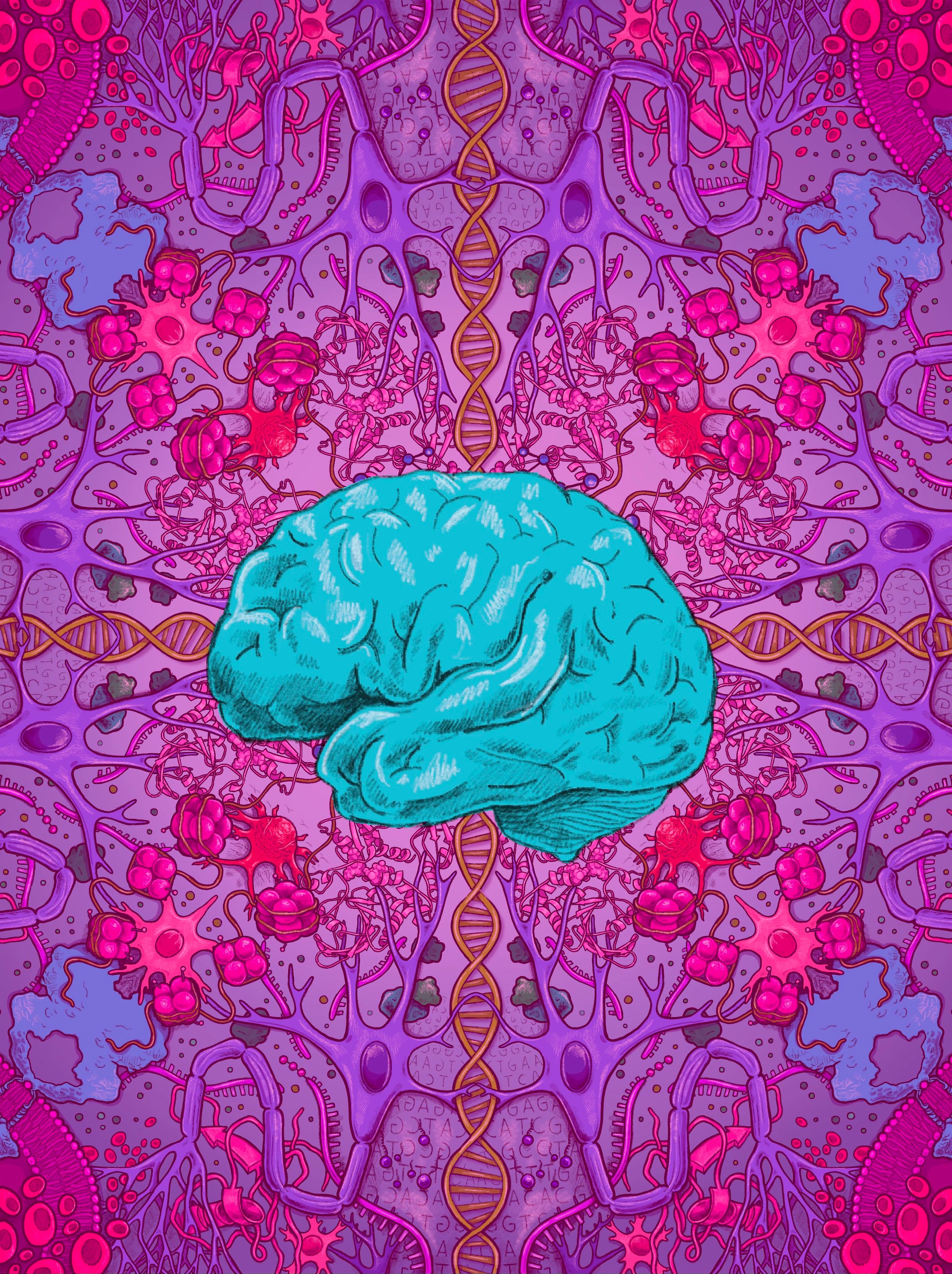Despite improvements in detection and therapy, the prognosis for high-grade glioma (HGG) remains poor. Prior research has studied disease progression in HGG, but our understanding of how and why the disease recurs so often (>90% of patients within two years for the most aggressive HGG) remains limited. To address this, CPTAC researchers and other collaborators have performed a comprehensive multi-omic analysis of HGG, including both IDH-wildtype and IDH-mutant grade 4 astrocytomas. The group leveraged 14 proteogenomic and metabolomic platforms to characterize 228 HGG samples, plus 18 normal brain samples and 14 brain metastases as comparators, to generate and investigate a rich multi-omic dataset. This body of work, published in Cancer Cell, reveals novel regulatory mechanisms governing tumor development and progression in HGG and represents a valuable resource for future research.
Study leader Dr. Li Ding from the Washington University School of Medicine in St. Louis emphasized the importance of their findings, writing:
”Our study helped broaden the molecular understanding of both IDH-wildtype and mutant high-grade gliomas… we highlighted diverse upstream driver alterations that converge on common downstream proteomic and metabolomic events, offering potential therapeutic opportunities.”
A significant finding was that both primary and recurrent tumors with different driver mutations (TERTp/PTEN and TERTp/EGFR) exhibit similar features including glycosylation patterns, changes in protein expression, and metabolic profiles. These shared features suggest some degree of downstream convergence amongst HGG tumors and that multiple genetic subtypes of HGG could benefit from a common treatment.

Comprehensive signaling network analyses allowed the team to confirm PTPN11 plays a central role in HGG acting as a key node in the signaling networks of growth factor receptors (EGFR, PDGFR) and metabolism (IDH1). This suggests targeting PTPN11 could disrupt multiple oncogenic signals simultaneously and serves to complement a prior CPTAC study which also pointed to PTPN11 as requiring further investigation.
Dr. Milan Chheda from the Department of Medicine at Washington University School of Medicine in St. Louis commented:
“This research reaches beyond genetics to provide a clearer understanding of how modifications on proteins drive these aggressive tumors… it was only through the highly collaborative CPTAC efforts that these kinds of discoveries could be possible.”
By analyzing longitudinal samples with advanced single-cell techniques, researchers revealed significant changes in both chromatin accessibility and gene expression between the primary and recurrent tumors. Multi-omic analyses revealed a host of other features that distinguish primary and recurrent tumors including differences in cell cycle regulation proteins, phosphorylation events involving splicing kinases, tumor microenvironment remodeling, and glycosylation associated with neutrophil-mediated immunity, to name just a few.
For IDH-mutant tumors specifically, the study identified low hypoxia signatures and reduced AMPKA (AMP-activated protein kinase alpha) activity. These altered responses to hypoxia and energy stress could represent vulnerabilities in IDH-mutant tumors and indicate this subset of patients may benefit from unique therapies.
Jingxian Liu, an MD-PhD student at Washington University School of Medicine in St. Louis and co-first author added:
"In addition to the findings outlined in the study, we hope this multi-omic dataset can serve as a rich resource for the community and empower follow-up studies with the ultimate goal of improving clinical outcomes for HGG patients."
Clinical data, proteomic data, and metabolomic data can be accessed via the Proteomic Data Commons (PDC). Genomic, transcriptomic, and multiome snRNA-seq data files can be accessed via Genomic Data Commons (GDC). Multiome snATAC-seq data files can be accessed via the Cancer Data Service (CDS). Pathology and CODEX images can be accessed via The Cancer Imaging Archive (TCIA) at and the Imaging Data Commons (IDC).

